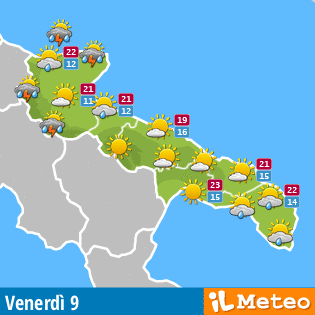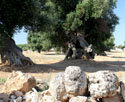Monte Sant'Angelo
Info Monte Sant'Angelo
-
Region:
Provincie:
Municipality:
CAP:
Area code:
Surface:
Population:
city hall:
-
Apulia
Foggia
Monte Sant'Angelo
71037
0884
245,13 Kmq
12.990
Piazza Municipio 2
The old town centre of Monte Sant'Angelo develops around the Archangel’s cave
Monte Sant’Angelo stands on a 800 metres high rocky spur of the Gargano and it is a U.N.E.S.C.O. World Heritage Site; it develops in the 5th century A.D. and it is indissolubly linked with the cult of Saint Michael, the Archangel. According to the tradition, the Archangel appeared in a cave in 490, 492, 493, to Lorenzo, Bishop of Siponto: that cave represents the heart of the present shrine of Saint Michael.
In order to give hospitality to many pilgrims reaching the cave covering the sacra via Longobardorum, some refuges were built which became the early houses of the town. Afterwards the town expanded on the slopes of the hill, creating a labyrinth of alleys and steps: it is the so called district Junno. The shrine of Saint Michael probably developed during the 5th century so that the Longobard dukedom of Benevento declared it National Shrine.
From 662 to 687 the duke Romualdo I financed the realization of a stairway to reach the cave and the altar with Saint Michael’s footprints. During the Middle Ages a huge number of noble figures arrived on the Monte Gargano: popes, leaders, emperors, saints. It is worth mentioning a very particular present made by the nobleman Pantaleone, from Amalfi: two magnificent bronze doors, melted in Costantinopoli in 1076, engraved with episodes of the Old and New Testament about angels’ interventions in the story of mankind.
The present entrance with arcades and the octagonal bell tower, which reminds of the towers of Castel del Monte, were built by Carlo I d’Angiò. He realized also new stairs, excavated in the rock, to reach the Basilica from the top. Through the lower arcade and the bronze doors you enter the Angevin nave, a stone structure leaning against the natural cave where the statue of Saint Michael, probably by Sansovino, and the 12th century Bishop’s throne are kept.
On the upper zone of the town, we find the castle marked by a pentagonal tower, dating back to the Norman age. It is worth mentioning the medieval church of Santa Maria Maggiore with its Romanesque façade, showing beautiful decorations with pilasters and rhombs and an elegant portal adorned by a carved prothyrum.














